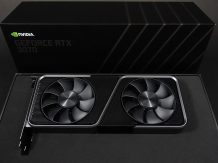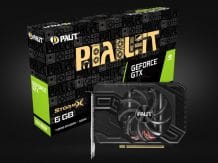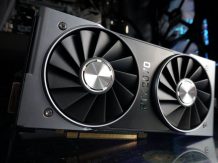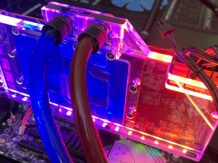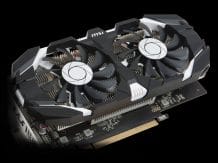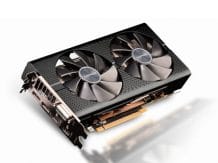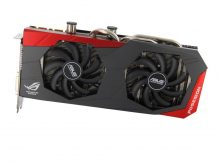Take a look of this list which compiles the best ASICs for cryptocurrency mining (high profitability). The standard ASIC for cryptocurrency mining is made in the form of a chip. It is not amenable to firmware and is characterized by high performance. High-quality models are equipped with several processors created on a chip base, power supplies and coolers. Having figured out what an ASIC for mining is, let’s determine the parameters for choosing equipment:
- Hashrate performance
- electricity consumption – such devices consume a lot of energy and before acquiring a certain sample, you need to compare the power of the network and the device;
- value for money – determines the payback period of ASIC miner.
Before you decide to purchase ASIC, we immediately notice that it is now more profitable to invest these funds in cloud mining services, where you rent the power of the same ASICs, but they are located in a remote data center and are serviced by specialists of this service, read more about cloud mining here.
Technical part
ASIC (application-specific integrated) is an integrated circuit specialized for solving a specific problem. Unlike general-purpose integrated circuits, specialized integrated circuits are used in a particular device and perform strictly limited functions specific to this device; as a result, the execution of functions is faster and, ultimately, cheaper.
- An example of an ASIC can be a microchip designed exclusively for controlling a mobile phone, microchips for hardware encoding/decoding audio and video signals (signal processors).
- ASIC has a narrow range of applications, due to a rigidly predetermined set of its functions.
- Modern ASICs often contain a 32-bit processor, memory blocks (both ROM and RAM) and other large blocks. Such ASICs are often referred to as System-on-a-Chip.
- In developing digital ASICs, hardware device description languages (HDL) such as Verilog and VHDL are used to describe their functionality.
Advantages and disadvantages of ASIC miners
ASIC is a special device designed to perform cryptocurrency mining calculations using one or more encryption algorithms.
These devices use integrated circuits designed for the most efficient calculation of specified hash functions, as well as specially designed cases and a cooling system.
Pros:
- large hashrate on a working algorithm;
- quick start, easy maintenance;
- low power consumption per unit of computing power compared to other devices, such as video cards and processors;
- good value for money, which should provide high profitability and quick payback;
- the presence of a reinforced housing and a productive cooling system facilitate the installation and connection of equipment.
Minuses:
- the impossibility of performing calculations on algorithms that differ from those provided by the manufacturer;
- increased noise and heat generation characteristic of high-performance server equipment and even more;
- powerful Asics, as a rule, require the purchase of a separate power supply;
- it is difficult to find specialists and components for their repair;
- the potential possibility of getting into the lists of equipment that has regulatory restrictions regarding the use of information encryption devices;
- quite rapid obsolescence and the inability to sell equipment after a significant increase in mining complexity, which reduces profitability. Unlike Asikov, mining farms on video cards retain the residual value even with a decrease in the profitability of mining, and therefore can be implemented as computer equipment.
Mining algorithms
- SHA-256 . It is the basis of the first digital money – bitcoins and several other cryptocurrencies (Bitcoin Cash and others). Decrypted by the following ASICs: Bitmain Antminer S9 (14 TH / s; 1340 W); Asic T9 Antminer from Bitmain (11.5 TH / s; 1450 W); Asic Bitmain Antminer V9 (11.5 TH / s; 1450 W); WhatsMiner M3 ASIC Miner (12.5 TH / s; 1576 W); DragonMint T1 by Halong Mining (16 TH / s; 1600 W); Ebit E10.1 Miner 18T from Ebang Communication (18 TH / s; 1600 W).
- Scrypt . It is the basis for the existence of laycoin and many other digital currencies. Bitmain’s Asic Antminer L3 + decrypts its code using an improved version of Asic L3 (504 MH / s; 800 W); A6 LTCMaster from Innosilicon (1.23 GH / s; 1500 W); A4 + LTCMaster by Innosilicon (620 MH / s; 750 W).
- Cryptonight . It can be mistaken for Cryptonote technology, which uses this algorithm. Thanks to him, Bytecoin, Monero and Electroneum operate. Decryption is due to Asic Antminer X3 from Bitmain (220 KH / s; 550 W); Giant-N from Baikal (20 KH / s; 60 W); DragonMint X2 Miner by Halong Mining (248 KH / s; 490 W); DragonMint X1 Miner by Halong Mining (124 KH / s; 245 W).
- Ethash (Dagger Hashimoto) . So far, the decryption is carried out by using video cards, but in the near future the modernization of this process. The development of an ASIC for the ether, not encountered before, is underway – Antminer F3.
- Blake (2b) . The algorithm works on this: Asic A3 Antminer from Bitmain (815 GH / s; 1275 W); Giant-B from Baikal (80 GH / s; 300 W); DragonMint B52 Blake2b Miner by Halong Mining (3.83 TH / s; 1380 W).
- X11 . A popular algorithm due to which the Dash currency functions. At the moment, the expediency of extracting currencies on it has slightly decreased, because much more powerful miners have appeared, significantly complicating the network device. However, many ASICs work with it: Asic Antminer D3 from Bitmain (19.3 GH / s; 1100 W); A5 DashMaster x11 asic miner from Innosilicon (32.5 GH / s; 750 W); Pinidea DR-100 PRO (22 GH / s; 900 W); Giant X10 from Baikal (10 GH / s; 630 W).
Companies producing ASIC devices
You can buy ASIC from 30 manufacturers who have anyway declared themselves. The most popular are the 5 following items:
Bitmain
- The largest manufacturer of equipment for bitcoin mining,
- The most efficient mining
- Three months warranty
- Usually sold on pre-order,
- Can use proprietary technology,
- 8–14 TH / s, depending on model
Canaan
- According to reviews, the most stable bitcoin miner,
- Avalon controller for up to 4 people on the same network
- Generally in stock,
- price of $ 700,
- Warranty,
- Less effective than the previous one.
- 7.3 TH / s.
Ebang
- The well-known mining company,
- It is famous for the combination of stability and efficiency,
- Usually out of stock, quickly sold,
- Price $ 700–1100,
- From 6.3 TH / s to 9 TH / s.
Bitfury
- There are no options for individuals
- Mine with BIP148 (UASF),
- ~ 1 million dollars per unit,
- Additional developments,
- 0.2 J / Gh
Options for choosing ASIC
It is easy to get confused in the motley variety of existing devices. There are several points to consider when looking for the answer to the question: “How to choose an ASIC miner?” The answer lies primarily in the user’s decision regarding the algorithms with which further work is planned. Here you need to be extremely attentive to the characteristics of the unit:
- Cost . In this market segment, efficiency and price are directly dependent on each other. The higher the first indicator, the higher the second. If possible, do not skimp on an expensive utility, because with a competent approach, these investments will pay off in the near future with interest.
- Energy consumption. This is one of the key factors that directly affect future mining revenues. Of course, you must try to find a product with minimal power consumption at the same time with a high hashrate. This is rare, but after spending a little time and patience it is quite possible to find it.
- The frequency of the processor. The performance of the miner, its speed, as well as the degree of hash rate directly depends on it (it is important to remember that this is not the same thing!). The higher the frequency, the more efficient the work.
- Hashrate directly. It determines the number of coins mined for a certain period of time. The higher it is, the greater will be the speed of work and, as a result, profit. As mining devices evolve, hashrate capabilities are constantly improving. But there is a negative side: increased energy consumption. Perhaps in the near future, developers will learn to balance these indicators.
On which ASIC to mine bitcoin (SHA-256)?
Consider which ASIC miner of the samples available on the market is better suited for decrypting bitcoin blocks:
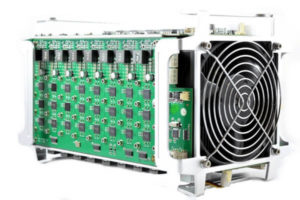
- Butterfly Labs – has a card capacity of 600 Gh / s with a power consumption of 0.6 kW.
- ASIC Terra Miner – capacity in the area of 2 Terahesh with electricity consumption of 2 kV / h.
- Antminer S5 – Has a Hashrate: 1155 TH / s with an energy consumption of 590 watts.
- Avalon 6 – will work with a minimum input voltage of 11.6 V, with a power of 1200 watts. An external power supply is required. As well as the network controller Raspberry Pi version B +.
- ASIC Antminer S7 – The hashrate is 4.73 TH / s, but the manufacturer warns about errors up or down 5%. Products of this series consume 1293 W of energy and operate with a minimum network resistance of 11.6 V.
- Antminer S9 – this model has enough power to operate at a speed of 13.5 TH / s. It operates in the temperature range +25 ° C – 40 ° C. The energy efficiency of the device is 0.1 Dg / Gh.
Reviews of the best ASIC models for 2018-2019
Consider the most powerful and popular models of ASIC miners, note that the cost and profitability of equipment can vary significantly due to price fluctuations in the cryptocurrency market.
Antminer S15 (released December 2018)
ANTMINER S15 28 TH / S is the flagship miner model from Bitmain on 7-nm chips, the most powerful of the new products released at the end of 2018. It has improved computing characteristics and increased energy efficiency.
Mining based on the SHA-256 algorithm, which allows mining cryptocurrencies such as Bitcoin, Bitcoin Cash and others. Quick setup, the ability to install the miner in both horizontal and vertical positions, a minimum of maintenance costs thanks to a more advanced heat transfer system.
- The mining algorithm is SHA256.
- Weight – 7 kilograms.
- Price – $ 1,475 for the first batch (December 20-31).
- Dimensions – 221 x 175.4 x 278.8 mm.
- The presence of energy saving mode – yes.
- The hash in performance mode is 28 TH / s.
- The energy saving hash is 17 TH / s.
- Power consumption in performance mode – 1596 watts.
- Power consumption in power saving mode – 850 watts.
- The fans are designed in parallel.
- The chip manufacturing technology is 7-nanometer.
Detailed data on the profitability and payback of ANTMINER S15 and T15 can be found in our review.
Antminer S9 with 13.5 Th / s ~ $ 2700
Miner S9 also operates on the SHA-256 algorithm. It is capable of performing calculations with a hash rate of up to 14 TX / s. According to the owners, the device is stable, easy to install and high payback speed.
ASIC boards have 189 chips developed using 16-nm FinFET technology. If we draw parallels with the previous model (S7), the Antminer S9 has three times the power and twice the best performance.
Of the advantages of ASIC, it is worth highlighting – the high speed of the microprocessor used in the control panel, an effective system for removing heat from work boards, as well as small dimensions, which makes it possible to use the device at home. Setting up Bitmain Antminer S9 takes a minimum of time, and it can be used after turning on and entering the main parameters (for the pool).
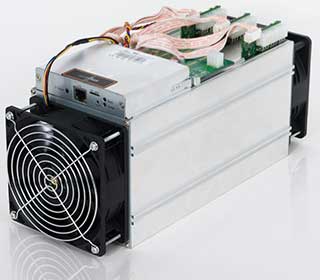
- HashRate: 13.5TH / s ± 5%;
- Power Consumption: 1350W;
- Energy Efficiency: 0.1 J / GH;
- Voltage: 11.60 ~ 13.00V;
- Processor: 189x BM1387;
- Dimensions: 350mm (L) * 135mm (W) * 158mm (H);
- Cooling: 2x 12038 fan;
- Operating temperature: 25 ° C to 40 ° C;
- Connection: Ethernet;
Antminer R4 ~ $ 1000
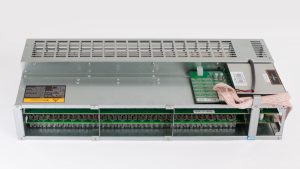
- Hashrate: 8.6th / s (may vary in the 5% range);
- Power Consumption: 845 W;
- Energy Efficiency: 0.1 J / Gh;
- Noise level: 52dB (at an ambient temperature of 35 ° C);
- CPU: BM1387;
- Number of processors: 126;
- Voltage 11.60 ~ 13.00V;
- Dimensions: 515mm (length) x 100mm (width) x 222mm (height);
- Connection: Ethernet;
Antminer S7 ~ $ 500
- Hash Rate: 4.73 TH / s ± 5%;
- Power Consumption: 1293W;
- Energy Efficiency: 0.25 J / GH;
- Voltage: 11.60 ~ 13.00V;
- Processor: 135x BM1385;
- Dimensions: 301mm (L) * 123mm (W) * 155mm (H);
- Cooling: 2x 12038 fan;
- Operating temperature: 0 ° C to 40 ° C;
- Connection: Ethernet;
Avalon 6 ~ $ 559.95
- Hash Rate: 3.65 TH / s
- Energy Efficiency: 270 J / tx * s;
- Input voltage: not less than 11.6 V;
- Controller OS: software from Avalon;
- Dimensions: 354 mm x 136 mm x 150 mm;
- Cooling: cooler 12038 with 3800 rpm;
- Network controller: Raspberry Pi (version B or B +);
- An external power supply is required;
- Rated Power: 990 W;
- Maximum power: 1200 W;
Antminer S5 ~ $ 139
- Hashrate: 1155 TH / s;
- CPU: BM1384;
- Network: Ethernet;
- Cooling: 1 fan of model 12038 + 2 radiators on the working boards of the device;
- Power Consumption: 590 W;
- Energy Efficiency: 0.51 J / gh;
- Temperature: 0-35 ° C;
- Dimensions: 298 mm x 137 mm x 155 mm
ASIC mining calculator for Bitcoin, Zcash, Ethereum, Monero
The most accurate ASIC calculator we have reviewed here .
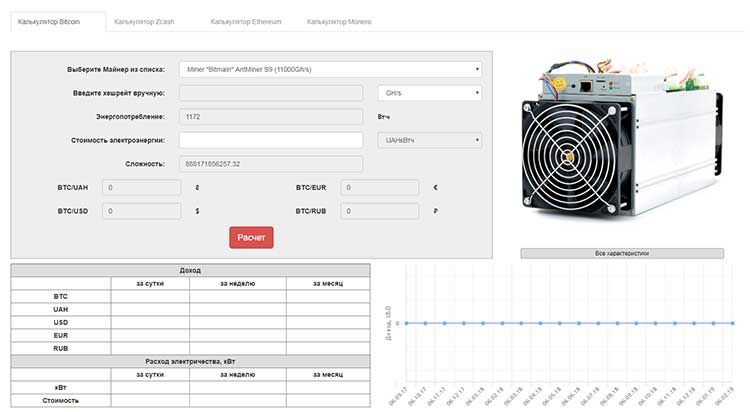
In order to use the Bitcoin calculator, Ethereum calculator, Zcash calculator or Monero calculator, simply select the ASIC miner or GPU farm that you are interested in from the drop-down list or enter the device’s hashrate of consumption known to you, and then click on the “Calculate” button. The calculator will provide all the information about the consumption of the miner and the current data on the earnings of cryptocurrencies with automatic conversion to dollars, hryvnias, rubles and euros.
In addition to the general data, this tool will provide you with visual tables in which information will be collected on daily, weekly and monthly earnings in various currencies, as well as on electricity consumption for the same time ranges.
Thus, the cryptocurrency calculator can maximize the process of choosing the equipment you need for mining, turning the long process of counting into a quick and enjoyable task.
The process of connecting an ASIC miner
It seems complicated at first glance, this process is quite easy, especially since each miner has a detailed step-by-step description of the installation.
Usually, it looks like this:
- Power Supply Connection We connect its connectors to the device body until a distinctive click is heard, and one of them goes to the control panel. Typically, the connectors for both purposes are the same, which further simplifies the task.
- Synchronization of a router and a network wire.
- Test run. You must verify that all connections are correct. If everything is done correctly, indicators and fans will let you know.
- IP address identification. This data is necessary for subsequent control of the device. There are many special applications for this task, but you can also use a regular browser by opening the desired page on which information about the router will be displayed.
- Setting parameters. All indicators can be brought to the desired position using the ASIC web interface: frequency and power of the processor, updates, and so on.
- Saving and rebooting. After these simple steps, the ASIC will be ready to go. The correctness of all installations is checked on the tab leading processes. Statistical information can be found in the pool account.
- Hot air vent. Only in this case, the work will be uninterrupted.
Please note that before installing, you still need to read the relevant instructions, because, despite the fact that almost all miners are configured the same way, individual models sometimes have unique features that you need to know about. For problematic issues, you can always turn to thematic forums and sites.
Hashrate table, efficiency and price – all models
| Model | Hashrate | Efficiency | Price |
|---|---|---|---|
| Antminer s1 | 180 gh / s | 2.0 W / Gh | $ 299.0 |
| Antminer s2 | 1000 Gh / s | 1.1 W / Gh | $ 2259.0 |
| Antminer s3 | 441 gh / s | 0.77 W / Gh | $ 382.0 |
| Antminer s4 | 2000 Gh / s | 0.7 W / Gh | $ 1400.0 |
| Antminer s5 | 1155 Gh / s | 0.51 W / Gh | $ 370.0 |
| AntMiner S5 + | 7722 Gh / s | 0.44 W / Gh | $ 2307.0 |
| Antminer s7 | 4.73 Th / s | 0.25 W / Gh | $ 479.95 |
| Antminer s9 | 13.5 Th / s | 0.098 W / Gh | $ 1,987.95 |
| AntMiner U1 | 2 gh / s | 1.25 W / Gh | $ 29.0 |
| Antminer u2 | 2 gh / s | 1.0 W / Gh | $ 49.66 |
| AntMiner U3 | 63 gh / s | 1.0 W / Gh | $ 38.0 |
| ASICMiner BE Blade | 11 gh / s | 7.72 W / Gh | $ 350.0 |
| ASICMiner BE Cube | 30 gh / s | 6.67 W / Gh | $ 550.0 |
| ASICMiner BE Sapphire | 0 Gh / s | 7.59 W / Gh | $ 20.0 |
| ASICMiner BE Tube | 800 gh / s | 1.13 W / Gh | $ 320.0 |
| ASICMiner BE Prisma | 1400 Gh / s | 0.79 W / Gh | $ 600.0 |
| Avalon Batch 1 | 66 gh / s | 9.35 W / Gh | $ 1299.0 |
| Avalon Batch 2 | 82 gh / s | 8.54 W / Gh | $ 1499.0 |
| Avalon Batch 3 | 82 gh / s | 8.54 W / Gh | $ 1499.0 |
| Avalon2 | 300 gh / s | N / a | $ 3075.0 |
| Avalon3 | 800 gh / s | N / a | N / a |
| Avalon6 | 3.5 Th / s | 0.29 W / Gh | $ 499.95 |
| bi * fury | 5 gh / s | 0.85 W / Gh | $ 209.0 |
| BFL SC 5Gh / s | 5 gh / s | 6.0 W / Gh | $ 274.0 |
| BFL SC 10 Gh / s | 10 gh / s | N / a | $ 50.0 |
| BFL SC 25 Gh / s | 25 gh / s | 6.0 W / Gh | $ 1249.0 |
| Bfl little single | 30 gh / s | N / a | $ 649.0 |
| BFL SC 50 Gh / s | 50 gh / s | 6.0 W / Gh | $ 984.0 |
| BFL Single ‘SC’ | 60 gh / s | 4.0 W / Gh | $ 1299.0 |
| BFL 230 GH / s Rack Mount | 230 Gh / s | N / a | $ 399 (used) |
| BFL 500 GH / s Mini Rig SC | 500 gh / s | 5.4 W / Gh | $ 22,484.0 |
| BFL Monarch 700GH / s | 700 gh / s | 0.7 W / Gh | $ 1379.0 |
| Bitfury sb | N / a | N / a | N / a |
| Bitmine.ch Avalon Clone 85GH | 85 gh / s | 7.65 W / Gh | $ 6489.0 |
| Black Arrow Prospero X-1 | 100 gh / s | 1.0 W / Gh | $ 370.0 |
| Black Arrow Prospero X-3 | 2000 Gh / s | 1.0 W / Gh | $ 6000.0 |
| Blue fury | 3 gh / s | 1.0 W / Gh | $ 140.0 |
| BTC Garden AM-V1 310 GH / s | 310 Gh / s | 1.05 W / Gh | $ 309.0 |
| BTC Garden AM-V1 616 GH / s | 616 gh / s | 1.05 W / Gh | $ 350.0 |
| CoinTerra TerraMiner IV | 1600 Gh / s | 1.31 W / Gh | $ 1500.0 |
| Drillbit | N / a | N / a | N / a |
| Hashbuster micro | 20 gh / s | 1.15 W / Gh | $ 688.0 |
| Hashbuster nano | N / a | N / a | N / a |
| HashCoins Apollo v3 | 1100 Gh / s | 0.91 W / Gh | $ 599.0 |
| HashCoins Zeus v3 | 4500 Gh / s | 0.67 W / Gh | $ 2299.0 |
| HashFast Baby Jet | 400 gh / s | 1.1 W / Gh | $ 5600.0 |
| Hashast sierra | 1200 gh / s | 1.1 W / Gh | $ 7080.0 |
| HashFast Sierra Evo 3 | 2000 Gh / s | 1.1 W / Gh | $ 6800.0 |
| Klondike | 5 gh / s | 6.15 W / Gh | $ 20.0 |
| KnCMiner Mercury | 100 gh / s | 2.5 W / Gh | $ 1995.0 |
| Knc saturn | 250 gh / s | 1.2 W / Gh | $ 2,995.0 |
| Knc jupiter | 500 gh / s | 1.2 W / Gh | $ 4,995.0 |
| Knc neptune | 3000 gh / s | 0.7 W / Gh | $ 12,995.0 |
| Littlefury | N / a | N / a | N / a |
| Metabank | 120 gh / s | 1.42 W / Gh | $ 2160.0 |
| NanoFury / IceFury | 2 gh / s | 1.25 W / Gh | N / a |
| NanoFury NF2 | 4 Gh / s | 1.35 W / Gh | $ 50.0 |
| BPMC Red Fury USB | 2.5 Gh / s | 0.96 W / Gh | $ 44.99 |
| ROCKMINER R3-BOX | 450 gh / s | 1.0 W / Gh | $ 200.0 |
| ROCKMINER R4-BOX | 470 gh / s | 1.0 W / Gh | $ 210.0 |
| ROCKMINER Rocket BOX | 450 gh / s | 1.07 W / Gh | $ 599.0 |
| ROCKMINER R-BOX | 32 gh / s | 1.41 W / Gh | $ 65.0 |
| ROCKMINER R-BOX 110G | 110 Gh / s | 1.09 W / Gh | $ 88.0 |
| ROCKMINER T1 800G | 800 gh / s | 1.25 W / Gh | $ 325.0 |
| Spondooliestech sp10 dawson | 1400 Gh / s | 0.89 W / Gh | $ 2845.0 |
| SP20 Jackson | 1.3-1.7 Th / s | 0.65 W / Gh | $ 248.99 |
| Spondooliestech SP30 Yukon | 4500 Gh / s | 0.67 W / Gh | $ 4121.0 |
| Spondooliestech SP31 Yukon | 4900 Gh / s | 0.61 W / Gh | $ 2075.0 |
| Spondooliestech SP35 Yukon | 5500 Gh / s | 0.66 W / Gh | $ 2235.0 |
| TerraHash Klondike 16 | 5 gh / s | 7.11 W / Gh | $ 250.0 |
| TerraHash Klondike 64 | 18 gh / s | 7.06 W / Gh | $ 900.0 |
| TerraHash DX Mini (full) | 90 gh / s | 7.11 W / Gh | $ 6000.0 |
| TerraHash DX Large (full) | 180 gh / s | 7.11 W / Gh | $ 10500.0 |
| Twinfury | 5 gh / s | 0.85 W / Gh | $ 216.0 |
| Avalon USB Nano3 | 3.6 Gh / s | 0.85 W / Gh | $ 55.0 |
| Gekkoscience | 9.5 Gh / s | 0.33 W / Gh | $ 49.97 |
Comparison of the effectiveness of ASICs and video cards – which is more profitable?
Initially, it was supposed to carry out mining using video cards and farms created on their basis, allowing to receive a constant income. Evaluate the benefits of each method by comparing objective statistics.
Acquired ASICs for mining are characterized by the following distinctive features:
- quick start;
- software updates are rare;
- a small number of components to ensure operation – twisted pair for connecting to the network, power supply;
- work on a limited number of algorithms;
- ASIC miner functions if there is a server block;
- high level of noise;
- repair is not possible;
- resale of ASIC-miner in the secondary market is not possible due to the rapid obsolescence of the released models.
Farms from video cards have the following features:
- there is a technical ability to mine all types of coins;
- silent work;
- there is a likelihood of full or partial resale in the secondary market;
- maintainability.
Farms require more time for assembly and assembly, and you must often update the software, otherwise, there will be a shortage of speeds. Transportation of farms is very difficult, they often break down and need a large number of components.
Performance ASIC table for different algorithms
(The table includes ASICs that are only on sale)
| Model | Hashrate | Efficiency |
|---|---|---|
| ASICs for mining on the SHA256 algorithm | ||
| Antminer s5 | 1155 Gh / s | 0.51 watts / gh |
| AntMiner S5 + | 7722 Gh / s | 0.44 watts / gh |
| Antminer s7 | 4.73 Th / s | 0.25 watts / gh |
| Antminer s9 | 13.5 Th / s | 0.098 Watt / Gh |
| ASICMiner BE Prisma | 1400 Gh / s | 0.79 watts / gh |
| ASICminer 8 Nano Pro | 76 Th / s | 0.52 watts / gh |
| Avalon6 | 3.5 Tx / cm | 0.29 watts / gh |
| AvalonMiner 841 | 13.6 Th / s | 0.095 Watt / Gh |
| BITFURY B8 | 50 Tx / s | 0.128 Watt / Gh |
| BFL Monarch 700Gh / s | 700 Gh / s | 0.7 Watt / Gh |
| Ebang E10.1 | 18 Th / s | 0.09 watts / gh |
| Innosilicon T2 Turbo + 32T | 32 Tx / s | 0.068 watts / gh |
| Holic H22 (on sale from December 2018) | 22 Th / s | 0.072 watts / gh |
| Knc neptune | 3000 Gh / s | 0.7 Watt / Gh |
| Pangolin Whatsminer M10 | 33 Th / s | 0.065 Watt / Gh |
| Spondooliestech sp10 dawson | 1400 Gh / s | 0.89 watts / gh |
| SP20 Jackson | 1.3-1.7 Tx / s | 0.65 watts / gh |
| Spondooliestech SP30 Yukon | 4500 Gh / s | 0.67 Watt / Gh |
| Spondooliestech SP31 Yukon | 4900 Gh / s | 0.61 Watt / Gh |
| Spondooliestech SP35 Yukon | 5500 Gh / s | 0.66 Watt / Gh |
| ASICs for mining on X11 / Quark / Quibt / Myriad-Groestl / Nist5 / Skein / X11Gost algorithms | ||
| Baikal Giant X10 | 10 Gh / s | 63 watt / gh |
| Baikal Giant + A2000 | 10 Gh / s | 220 watts / gh |
| ASICs for mining on the Scrypt algorithm | ||
| Antminer l3 | 504 mh / s | 1.58 watts / mh |
| Innosilicon A6 LTCMaster | 1230 Mh / s | 1.22 watts / mh |
| BW L-21 | 550 Mh / s | 1.72 watts / mh |
| ASICs for mining on the X11 algorithm | ||
| Innosilicon A5 DashMaster | 32 Gh / s | 23.43 watts / gh |
| Innosilicon A5 + DashMaster | 65 Gh / s | 23.07 watts / gh |
| Spondoolies SPx36 DASH | 540 Gh / s | 8.14 watts / gh |
| iBeLink DM56G | 65 Gh / s | 37.5 watts / gh |
| iBeLink DM22G | 22 Gh / s | 36.8 watts / gh |
| Pinidea Asic X11 DR-100 | 22 Gh / s | 40.9 watts / gh |
| ASICs for mining on the CryptoNight algorithm | ||
| Antminer x3 | 220 kh / s | 2.27 watts / kh |
| Baikal BK-N240 | 240 kh / s | 2.7 watts / kh |
| Pandaminer b3 mute | 5.52 kh / s | 177 watts / kh |
| Pandaminer b3 pro | 5.52 kh / s | 177 watts / kh |
| Innosilicon A8 + CryptoMaster | 240 kh / s | 2 watts / kh |
| ASIC for Equihash mining | ||
| Innosilicon A9 ZMaster | 50 Ksol / s | 12.4 Watts / Ksol |
| Antminer z9 | 40.8 Ksol / s | 28.18 Watt / Ksol |
| Antminer Z9 Mini | 10 Ksol / s | 30 W / Ksol |
| Zeon 180K | 180 Ksol / s | 12.22 W / Ksol |
| ASICminer Equihash 40K | 40.8 Ksol / s | 28.5 W / Ksol |
| Pandaminer b3 pro | 2.04 Ksol / s | 502 W / Ksol |
| ASIC for mining on the NEOSCRYPT algorithm | ||
| BITTECH NS | 63.2 Mh / s | 19.77 watts / mh |
| ASIC for mining on the Lyra2REv2 algorithm | ||
| Dayun zig z1 | 6.8 Gh / s | 176.47 watts / gh |
| ASICs for mining on the Blake256 algorithm | ||
| Pangolin Whatsminer DCR | 44 Tx / s | 0.05 watts / gh |
| iBeLink DSM7T | 7 Th / s | 0.3 watts / gh |
| iBeLink DSM6T | 6 Th / s | 0.35 watts / gh |
| FFMiner DS19 | 3.1 Tx / s | 3.1 Tx / s |
| Baikal BK-D | 0.28 Th / s | 3.92 W / Gh |
| Halong Mining DragonMint B29 | 2.1 Th / s | 0.42 watts / gh |
| Innosilicon D9 DecredMaster | 2.4 Th / s | 0.416 watts / gh |
| Obelisk DCR1 | 1.2 Tx / s | 0.416 watts / gh |
| ASICs for mining on Blake2B algorithm | ||
| Halong Mining DragonMint B52 | 3.83 Th / s | 0.36 watts / gh |
| Innosilicon S11 SiaMaster | 4.3 Th / s | 0.32 watts / gh |
| ASIC for Ethash mining | ||
| Antminer E3 (180Mh) | 180 mh / s | 4.44 watts / mh |
| Antminer g2 | 220 Mh / s | 5.45 watts / mh |
| Innosilicon A10 ETHMaster (485Mh) | 485 mh / s | 1.75 watts / mh |
| Innosilicon A10 ETHMaster (432Mh) | 432 mh / s | 1.71 watts / mh |
| Innosilicon A10 ETHMaster (365Mh) | 365 mh / s | 1.78 watts / mh |
| Pandaminer b3 mute | 230 Mh / s | 5 watts / mh |
| Pandaminer b3 pro | 230 Mh / s | 5.43 watts / mh |
As you can see from the table, even the recently released ASICs have a wide variation in their profitability. For example, when comparing Innosilicon products with their competitors’ equipment for ether mining, a two to three-fold difference in energy efficiency is visible, which proportionally affects the income of miners.
Before choosing, you always need to look at the current situation on the market – the cryptocurrency rate and the complexity of the network.
